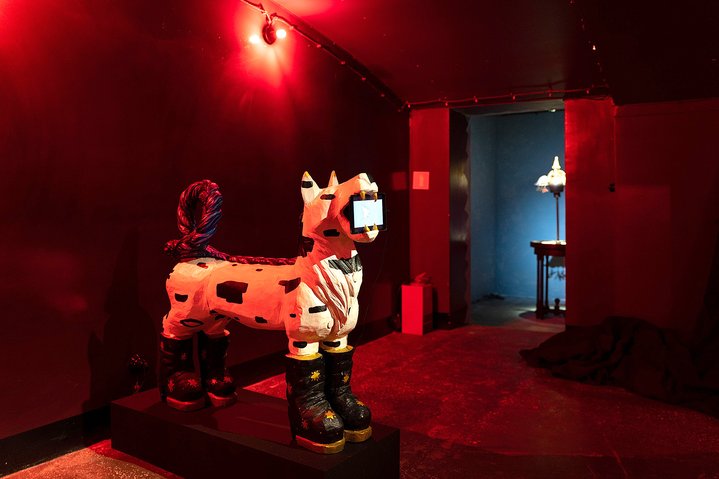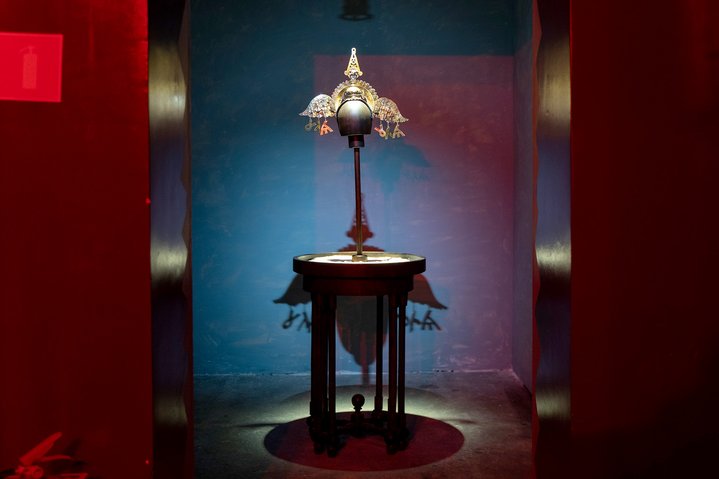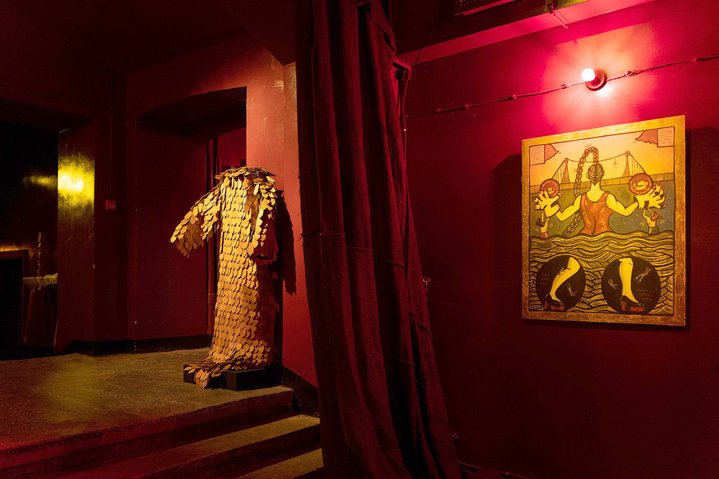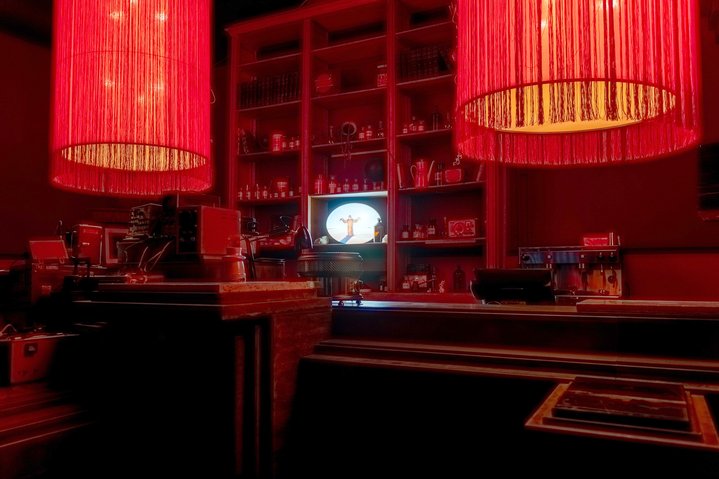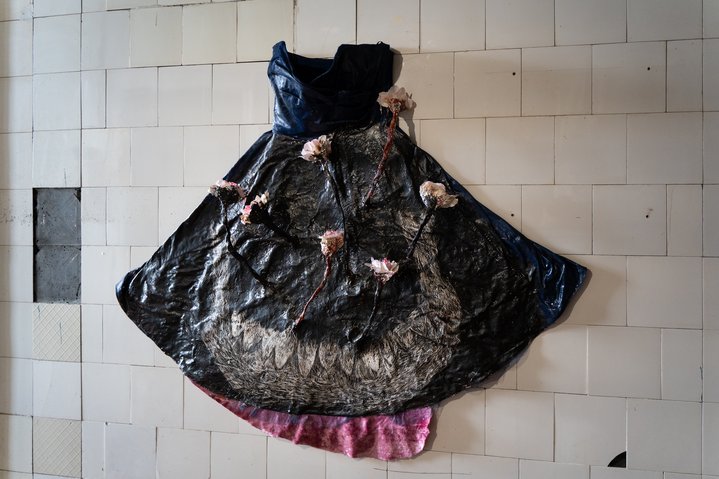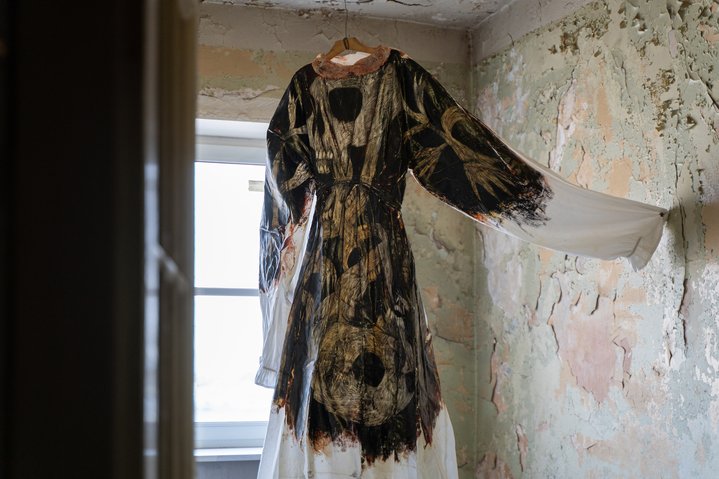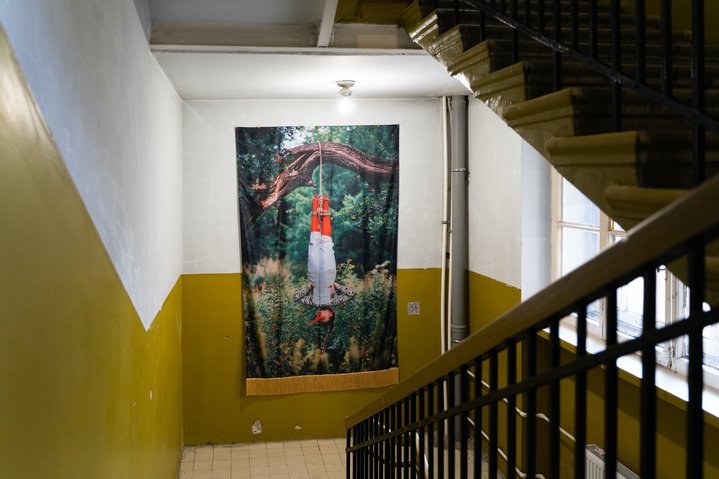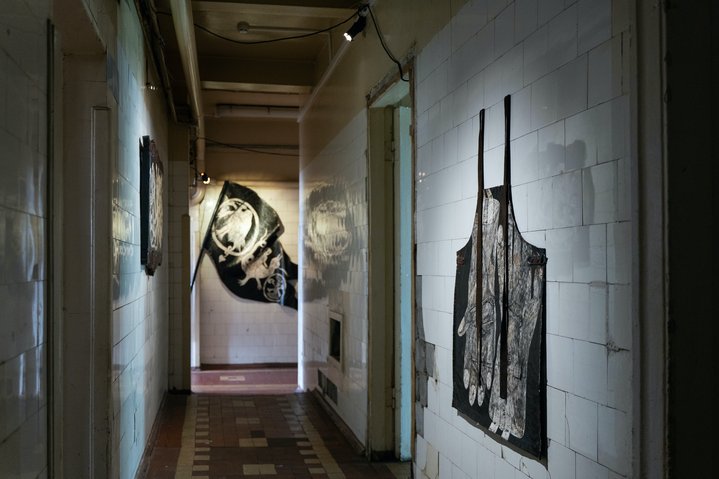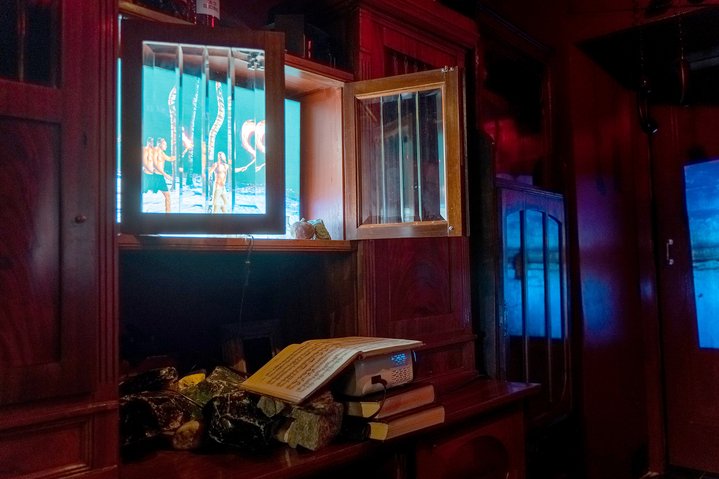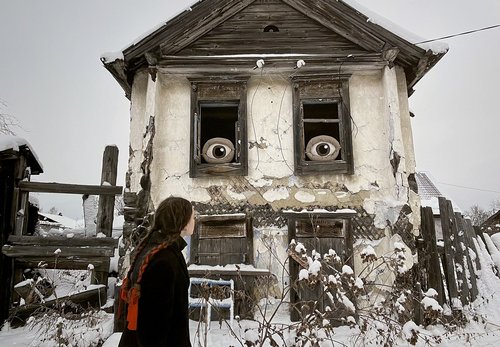Spooked by Mikhailov and Podkorytova and the Chthonic Powers of Art
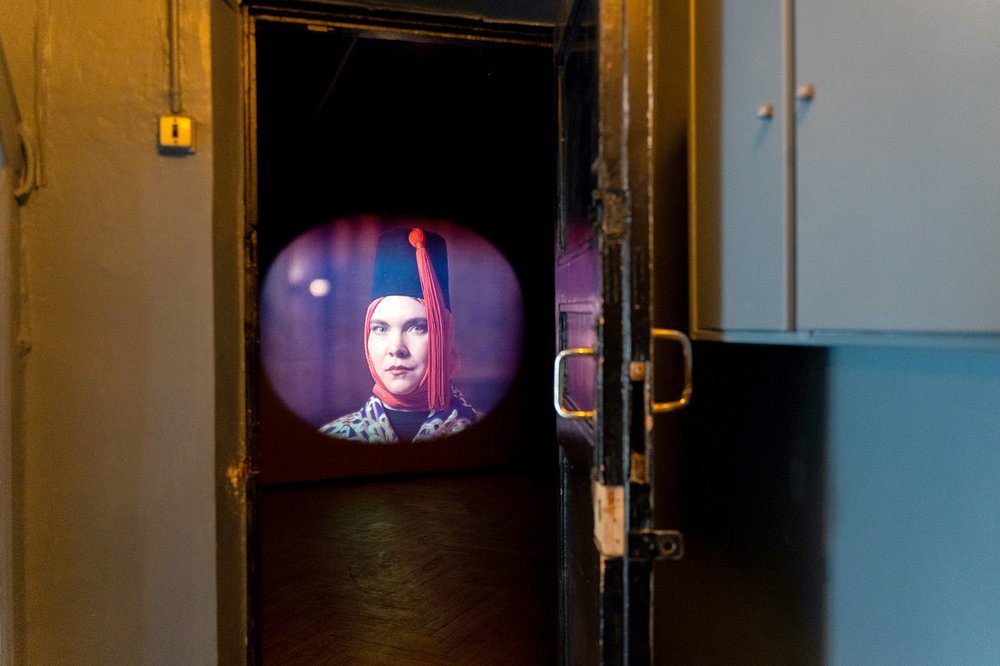
Both Simple and Dark. A joint project of MYTH Gallery and Radio House. Exhibition view. Photo by Lyudmila Burchenkova. Courtesy of MYTH Gallery and Radio House
Two artists have transformed a historical mansion in the centre of St Petersburg into a ghoulish fairyland of folklore fit for Halloween with a tinge of contemporary dread.
On 1st December 1952, there was the legendary ‘philological school’ action which consisted of three students in the philological faculty at Leningrad University attending class wearing Russian traditional dress, where they ate cold bread soup with wooden spoons and sang folk songs or poems by Futurist poet Velimir Khlebnikov. It was said that they also wrote lecture notes using goose quills. Poet and philologist Lev Losev called it a realisation of "pan-Slavic Khlebnikov utopia", while poet Viktor Kulle explained the happening by its context: at the time the Soviet government had a campaign against cosmopolitanism. The three protagonists Eduard Kondratov, Mikhail Krasilnikov and Yuri Mikhailov parodied and ridiculed this campaign to the extreme. Although the action was light-hearted fun, it happened to coincide with the assassination of Soviet leader Sergei Kirov and thus was labelled as a Trotskyist-Bukharin provocation by a bunch of weirdos. After a swift and thorough investigation, two of the students were expelled from the university as well as the Komsomol.
Slavic flair, traditional dress, melodies in which the human voice becomes the medium, fearless irony and laughter during what were gloomy conditions in the late Stalinist epoch connect with the pebble armour and vocal performances of contemporary artist Ulyana Podkorytova (b. 1984), as well as the black canvases scratched with letters by Vadim Mikhailov (b. 1979). In recent years Russian artists have become more interested in the folkloric and chthonic, and in popular Russian language prose such as texts by Evgenia Nekrasova and Masha Gavrilova. Against the background of the song ‘I am Russian’ which sounds out from every corner, as Russian intellectuals we have to somehow reassemble and reshape our identity, reappropriate and conceal once more meanings that turn endlessly on the wheels of the propaganda machine.
The exhibition ‘Both Simple and Dark. A joint project of MYTH Gallery and House of the Radio’ is open to the public in St. Petersburg until 5th of November. The mythological worlds of Podkorytova and Mikhailov are brought together in the otherwise drafty spaces of the House of the Radio, an opulent early 20th century mansion that was built for the local noblemen’s Assembly, now used as a concert hall. Their creations invade staircases and passages usually behind the scenes for employees, the former food hall, and a bar in the basement called ‘Alekseich’, named after the 19th century anarchist Pyotr Kropotkin. The exhibition involves a lot of walking: up and down staircases, passing through a courtyard, moving through countless rooms some filled with the smell of incense and previously unused, cold rooms with rusty stains on the floor. This is a real site-specific project - Vadim Mikhailov asked not to change anything on the seventh floor, to leave derelict wires, mirrors and sinks as they were. These found objects were turned into cyberskeletons of mysterious dead beings.
Vadim Mikhailov often uses the clothes of close friends, broken Soviet toys and branches rescued from cemeteries around St Petersburg. A discarded sex doll he randomly found in a puddle is framed with light bulbs and pomegranate fruit, symbols of Persephone, the ruler of the underworld. Ulyana Podkorytova’s materials are more refined, such as pieces from church utensils and icon frames she sources at flea markets. The texture of her work is also more luxurious: her shimmering mother-of-pearl ceramics have inherited the rich traditions from Abramtsevo, an estate near Moscow where ceramic art and other crafts flourished in early 20th century, supported by art patron and industrialist Savva Mamontov. Some of her work recalls Russian art nouveau painter Mikhail Vrubel's (1856–1910) majolica works on the theme of Bylinas, ancient Russian heroic folk ballads. Unsurprisingly Podkorytova grew up in Abramtsevo and still feels connected to it.
Among the more curious characters invented by Podkorytova include a diva whose long braid has a separate mystical life, the pseudo-folk heroine Gertruda the Fierce, observant mythical animals created from parts of spinning wheels and troughs and Zarni An, a golden woman who carries a light.
Mikhailov is more interested in contemporary life: his heroes are friends who emigrate and who turn into apocalypticbeasts and are compared with exiles from paradise. Or death arriving in a laurel wreath, on a hungry old horse, wrapped in a mystical cloak bearing the inscription ‘Everything is not so unambiguous’.
Mikhailov and Podkorytova’s folklore does not originate only in epic Slavic and Old Russian myths; they find inspiration in a variety of sources such as the sand-covered village of Shoyna on Russia’s White Sea coast, or modern memes, or Pinocchio from a 1970s film, or tarot cards, pioneer uniforms, or the rugs that were typically hung on the walls in Soviet-era communal flats.
Vadim Mikhailov decorates wall rugs or velvet tablecloths with idyllic subjects with a layer of primer, applies black oil paint, and then scratches the image with a small, sharp tool, moving from darkness to light. In these works, the text is like the voice of an alien being, a bearer of authority which barks instructions or is a flickering sign in an alley. For the rest of November these objects by Mikhailov, which combine word and image, can also be seen in the Masters Gallery space in Moscow.
Both Mikhailov and Podkorytova address magical thinking and the collective unconscious. Standing today in the middle of a catastrophic world like the heroine in Ulyana Podkorytova’s film, covered with sand from the bottom of the White Sea, one would like to put on armour made of aspen shingles and become a cone, an armadillo, a yeti, or an owl. "Isolate yourself by curling up into a ball," Podkorytova writes on an illustration of this costume of armour, included in what is a haunting yet telling exhibition about our times.
Both Simple and Dark. A joint project of MYTH Gallery and Radio House
St. Petersburg, Russia
23 September – 5 November, 2023
Vadim Mikhailov. Draw Flowers!
Masters School
Moscow, Russia
27 October – 1 December, 2023






